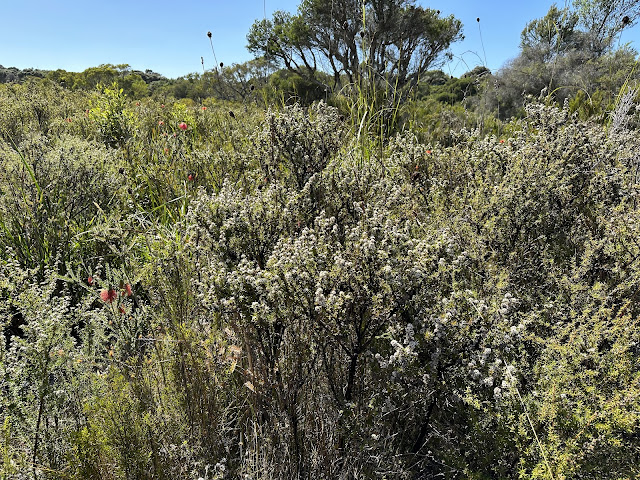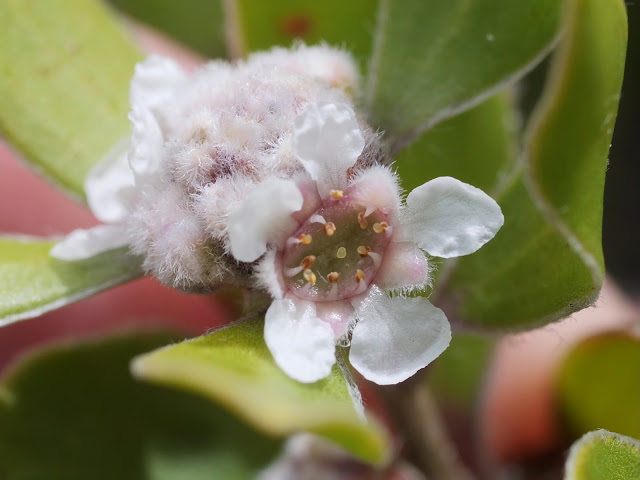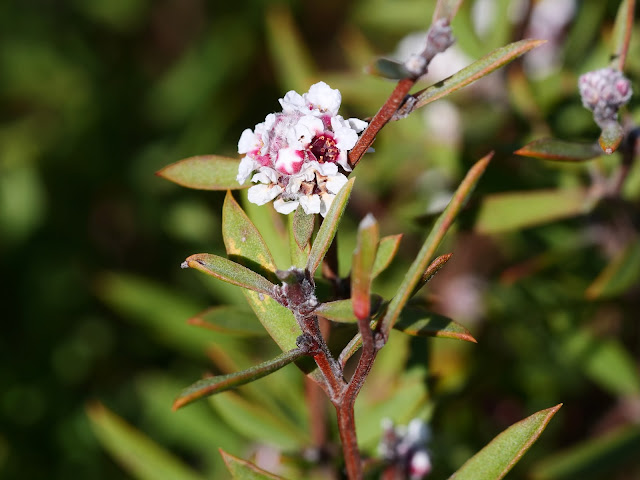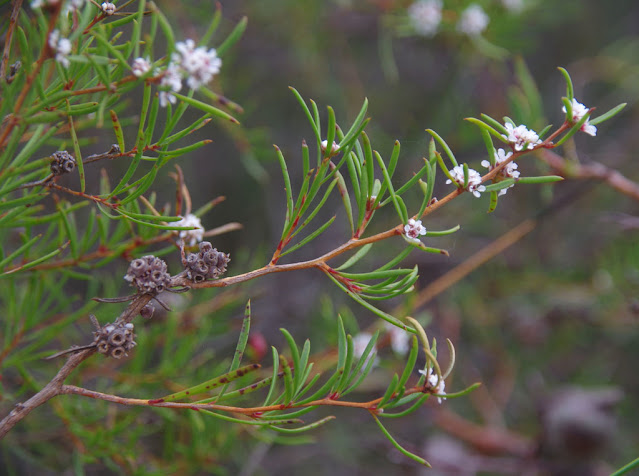Taxandria fragrans
Fragrans from the Latin, meaning smelling. This species has fragrant oils in the leaves.
Occurs from near Margaret River to east of Denmark near Redmond and Marbellup, with scattered records outside this range. Grows in swamps on acid peaty sand and in the seasonally waterlogged margins of broad upper valleys.
A shrub to 2.4 m tall. Leaves alternate or in alternate clusters, spreading and somewhat rigid, almost stemless, linear to very narrowly elliptic, 7—11 mm long, 0.7-2 mm wide, upper surface slightly concave, mostly hairless, tip pointed with a short mucro (exposed tip of vien). Leaves are straighter than those of Taxandria parviceps.
Flower clusters generally globular, axillary or terminating short axillary shoots, 10–15 mm across. Bracts and bracteoles largely hairless. Sepals hairless and usually pointed though they may be rounded. Petals white. Stamens 10, one opposite each sepal and petal.
Fruits in roughly globular clusters, typically 8–10 mm across. Each capsule roughly cup-shaped 2.5–3.5 mm across, downy.
Flowers mostly February to May but petals persist until at least fruit matures; fruits May to November, usually persisting until the following season or longer.









Comments
Post a Comment